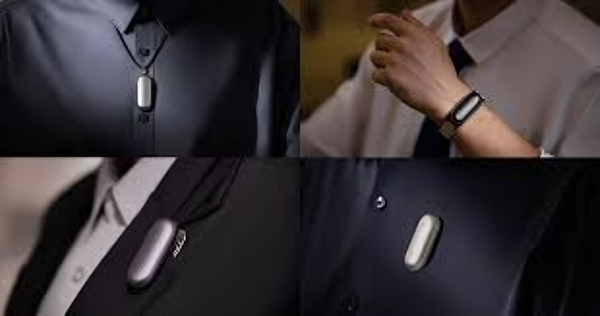Cybersecurity in a Hyper-Connected World Past, Present, and Future

Imagine waking up to find your smart thermostat hacked, your car’s navigation system rerouted, or your bank account drained—all because a single device in your hyper-connected home was compromised. In 2025, this isn’t science fiction; it’s the reality of our hyper-connected world, where billions of devices, from smartphones to IoT gadgets, form a sprawling digital web. This connectivity has transformed our lives, but it’s also unleashed a torrent of cybersecurity challenges. From the early days of basic firewalls to today’s AI-powered defenses, cybersecurity has evolved dramatically to keep pace. Join me as we explore this journey, uncover the current landscape, and peek into the future of protecting our digital lives.
The Dawn of Cybersecurity: A Simpler Time
In the early 2000s, the internet was a budding frontier, with just over 1 billion users by 2005 (ITU). Cybersecurity was rudimentary, relying on passwords, firewalls, and antivirus software to fend off basic threats like the ILOVEYOU virus. Most data was still stored in physical files, making digital breaches less common but physical theft a concern.
Back then, hackers were often hobbyists, experimenting with malware. But as the internet grew, so did the stakes, setting the stage for a new era of cyber threats.
The Mid-2000s: When Cybercrime Got Serious
By the mid-2000s, the digital landscape had exploded. Cybercriminals turned their skills into profit, deploying sophisticated malware like Zeus and Vundo, and orchestrating botnets for DDoS attacks. The 2007 TJX breach, which exposed 45 million credit card details and cost US$41 million, was a wake-up call (Malwarebytes). Phishing scams and data breaches surged, pushing businesses to bolster their defenses with stronger access controls and encryption.
This era marked a shift from playful hacking to organized cybercrime. The attack surface expanded as more devices connected to the internet, forcing cybersecurity to evolve rapidly.
The 2010s: Regulation and Innovation Take Center Stage
The 2010s were a turning point. Ransomware attacks like WannaCry and NotPetya caused over US$10 billion in damages, highlighting the need for robust defenses. Artificial intelligence (AI) and machine learning (ML) emerged as game-changers, enabling faster threat detection and response. Meanwhile, regulations like the General Data Protection Regulation (GDPR) in 2018 set global standards for data protection, with hefty fines for non-compliance.
Businesses began appointing Chief Information Security Officers (CISOs) and investing in cybersecurity training. The cybercrime market matured, with hackers earning significant profits, underscoring the need for a proactive approach.
2025: Cybersecurity in a Hyper-Connected World
Today, in 2025, hyper-connectivity defines our world. With remote work, cloud computing, and an estimated 20 connected devices per person, the attack surface is vast . IoT devices, from smart thermostats to wearable health monitors, create new vulnerabilities, while supply chain attacks, like the SolarWinds breach, expose systemic risks.
Zero trust security models, which assume no user or device is inherently safe, are becoming standard, reflecting the dissolution of traditional network perimeters. AI-driven defenses automate threat detection, but cybercriminals are also using AI for deepfakes and adaptive malware (Medium). Cloud security is evolving with tools like Cloud Access Security Brokers (CASBs), and 5G network security is critical as IoT and critical infrastructure rely on faster connectivity .
On X, experts highlight 2025 trends like AI-powered attacks, quantum computing threats, and zero-day vulnerabilities, emphasizing the need for proactive defenses. Cyber insurance is also gaining traction, reducing breach costs by nearly US$200,000 on average.
Challenges remain. The complexity of securing billions of devices, coupled with a shortage of skilled professionals, strains resources. Yet, solutions like biometric authentication and automated threat hunting are paving the way for a more secure future.
Looking Ahead: The Future of Cybersecurity
The future of cybersecurity in a hyper-connected world is both exciting and daunting. Research suggests several trends will shape the landscape by 2030 (CLTC):
- AI and ML as Double-Edged Swords: AI will enhance threat detection but also empower cybercriminals with tools like adversarial AI, requiring constant innovation.
- Zero Trust Dominance: With traditional perimeters gone, zero trust will be ubiquitous, ensuring continuous verification.
- Quantum-Resistant Cryptography: Quantum computing could break current encryption, necessitating new standards.
- IoT and 5G Security: With 200 billion IoT devices projected by 2030, securing these networks will be critical.
- Supply Chain Vigilance: Enhanced visibility and stringent measures will combat supply chain vulnerabilities.
- Privacy and Trust Crisis: A growing online trust crisis, fueled by AI and misinformation, will demand robust privacy laws and information integrity measures (CLTC).
- International Collaboration: Global cyber threats require cross-border cooperation to share intelligence and combat attacks.
These trends highlight a dynamic future where technology drives both progress and risk. As one X post notes, “Cybersecurity in 2025 isn’t just evolving—it’s being tested like never before”.
Practical Takeaways
- Stay Informed: Follow cybersecurity updates on X or platforms like Simplilearn to stay ahead of threats.
- Adopt Strong Practices: Use two-factor authentication, update software regularly, and create complex passwords (Medium).
- Consider Cyber Insurance: Protect your business with insurance to mitigate breach costs
- Invest in Training: Explore cybersecurity courses to build skills or pursue a career in this growing field.
- Advocate for Collaboration: Support policies that foster global cybersecurity cooperation.
Comparison Table
Era | Key Developments | Challenges | Solutions |
|---|---|---|---|
Early 2000s | Basic passwords, firewalls, antivirus software | Simple malware, limited regulation | Data Protection Act 1998 |
Mid-2000s | Sophisticated malware, botnets, phishing | Growing attack surface, monetized crime | Access controls, encryption |
2010s | AI/ML detection, GDPR, ransomware surge | Mature cybercrime market, talent gap | CISOs, regulatory compliance |
2025 | Zero trust, AI defenses, cloud/5G security | IoT vulnerabilities, supply chain risks | Biometrics, cyber insurance, automation |
Future (2030) | Quantum cryptography, global collaboration | AI-powered attacks, trust crisis | Privacy laws, workforce development |
Conclusion
The evolution of cybersecurity in our hyper-connected world reflects a relentless race between innovation and threat. From humble beginnings to today’s AI-driven defenses, cybersecurity has adapted to protect our digital lives. As we look to 2030, trends like zero trust, quantum-resistant cryptography, and international collaboration will shape a resilient future, though challenges like AI-powered attacks and trust erosion loom large. By staying informed, adopting strong practices, and supporting global efforts, we can all play a role in securing this interconnected world. In 2025, cybersecurity isn’t just about technology—it’s about safeguarding our way of life.



